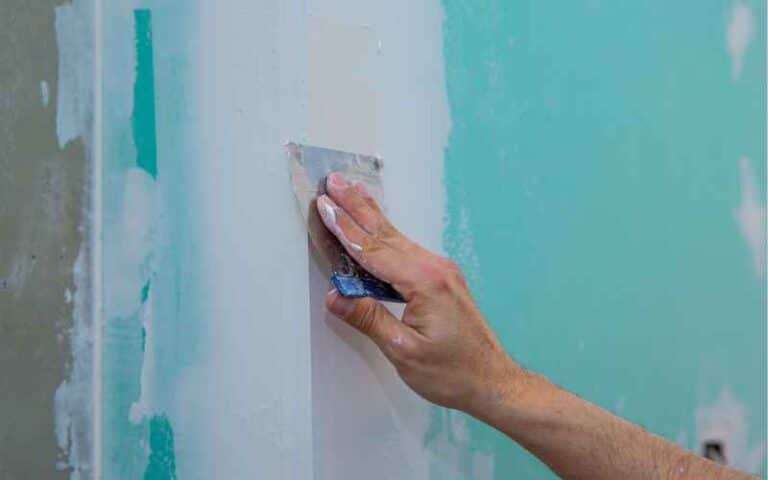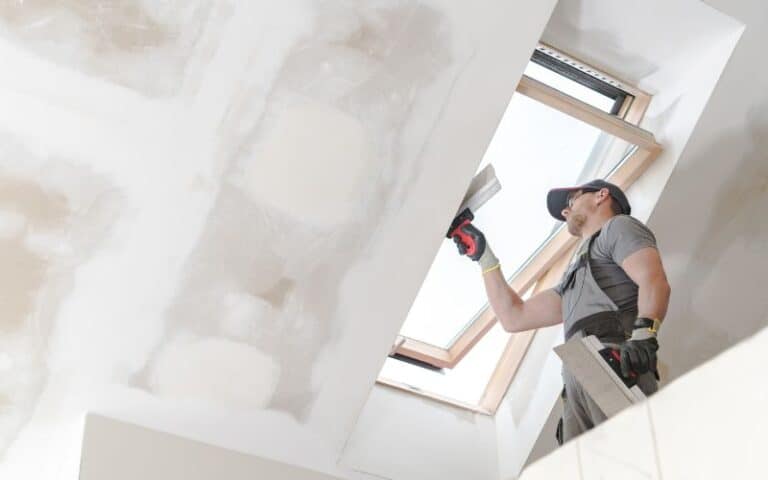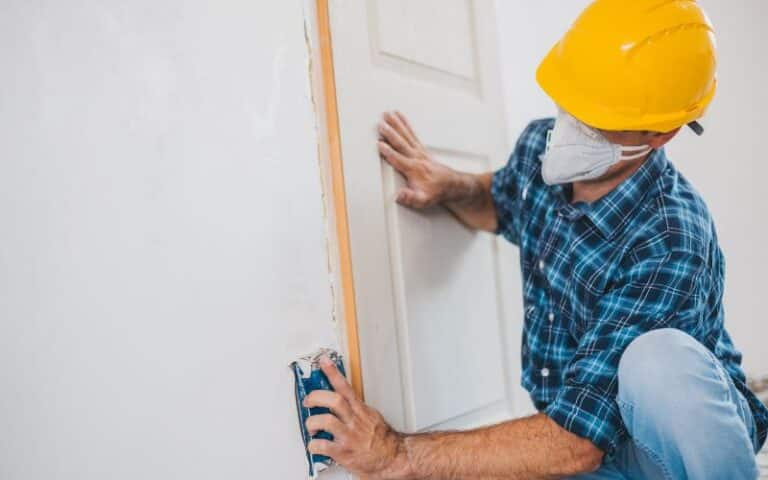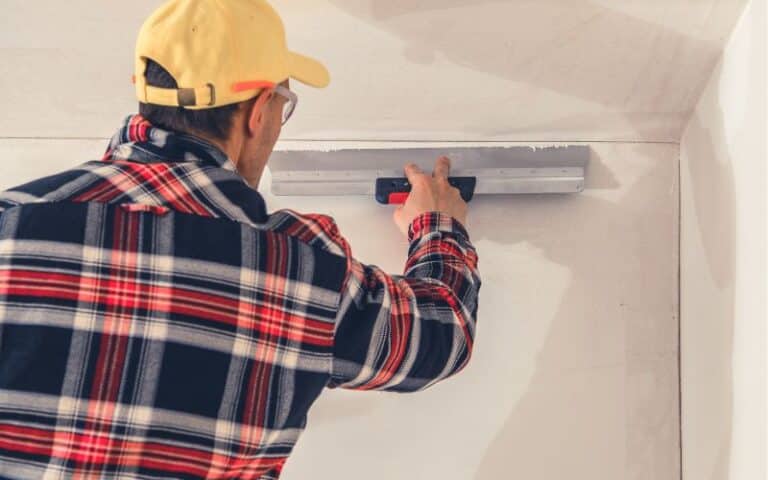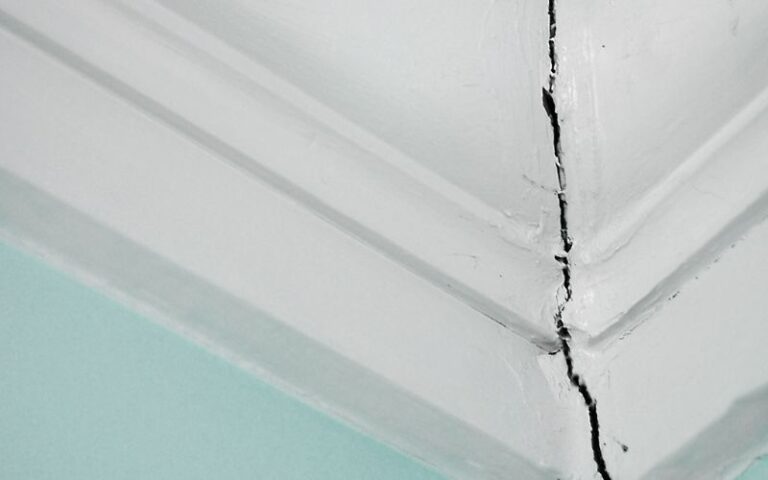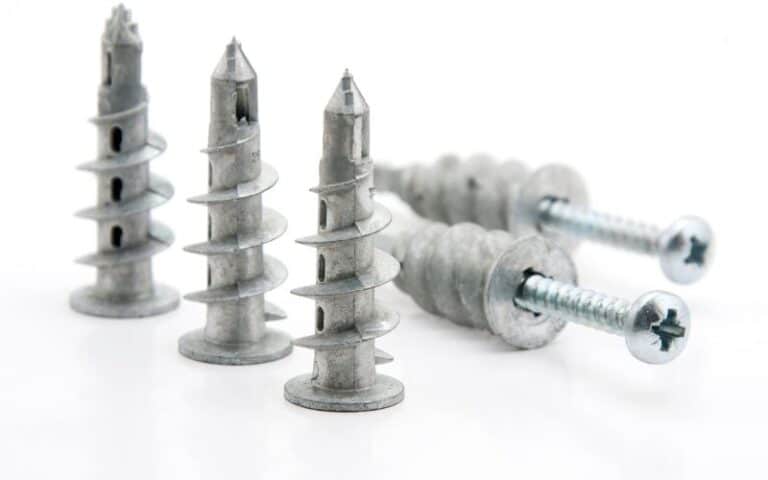As one of the best joint compounds for construction, drywall mud is especially great for strengthening and smoothing drywall during installations.
However, despite being best for complementing drywall installations, many wonders if drywall mud can be used on other surfaces because of its strength.
If you’re wondering whether drywall mud can be used as a smoothing/strengthening agent on cement boards, you’re in the right place.
You can use drywall mud as a reliable strengthening and smoothing agent on cement boards. However, it is best to use a joint compound that sets faster than drywall mid while working with cement boards in buildings. Also, if you’re using drywall mud on cement boards, avoiding places exposed to moisture is best.
In this article, I’ll explain if you can use drywall mud on cement boards and which other mud can be used on cement boards.
By the end, you’ll also learn how to finish the point where a cement board meets the drywall during installation.
Ready for a Drywall Quiz?
Can I Use Drywall Mud on Cement Board?
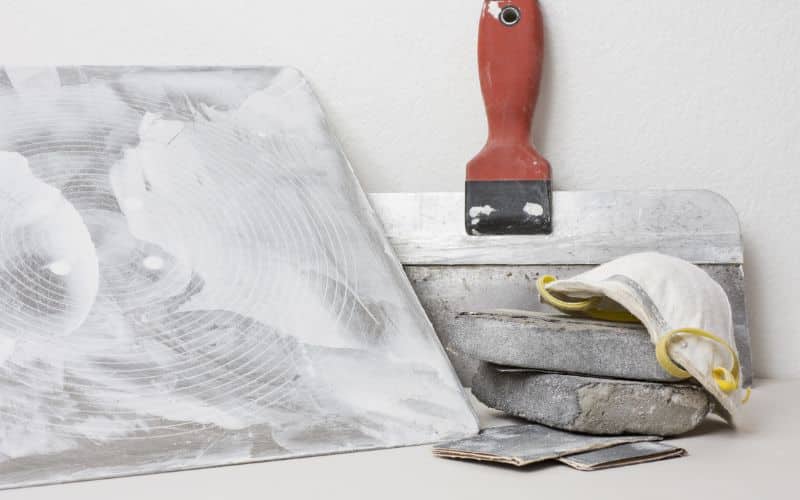
You can use drywall mud on a cement board for a smooth finish, strengthen it further, and be satisfied with the results.
However, according to several building professionals, drywall mud as a joint compound isn’t the best option for finishing a cement board.
A few characteristics of drywall mud make it less suited for finishing on a cement board compared to other joint compounds.
Below are the characteristics of drywall mud that make it less compatible with a cement board compared to other types of mud;
#1. Drywall Mud Takes Long to Dry
The application process for drywall mud on a cement board is relatively fast, mainly since it’s just being used as the finishing.
On the other hand, the drying period for drywall mud on a cement board takes as long as twenty-four hours or more.
However, a skilled building professional can apply the drywall mud so that it dries in at least 12 hours.
Unfortunately, not everyone can hasten the denying process of drywall mud on their cement board, so they’d have to wait twenty-four hours.
In some cases where there are unfavorable weather conditions, it could take days for drywall mud to dry completely.
A further extended drying time eventually makes the finish rough or not as good as you’d desire when drywall mud is used on cement boards.
#2. Drywall Mud Can’t be Used in Moisture-Filled Areas
You cannot use drywall mud for cement board finishing if it is located in a part of a building that’s constantly exposed to moisture.
You might be unhappy with the results if you use drywall mud on cement boards in your bathrooms or kitchens.
This is because when drywall mud comes in contact with moisture repeatedly, it loses its structural integrity.
Also, drywall mud tends to get soft, mold-prone, and weak after continuously coming in contact with moisture.
Due to this, drywall mud is not recommended for use on cement boards with a risk of constant moisture exposure.
What Other Mud Do You Use on Cement Board?
You can use the various types of joint compounds as a cement board finish, such as all-purpose, taping, or quick-setting compounds.
However, these joint compounds have the same shortcomings as drywall mud, making them unsuitable for a long-term fit.
On the other hand, thin-set has proven to be the most effective material for smoothing or speaking cement boards long-term due to its features and compatibility.
In light of this, you might wonder what makes thin-set a better fit for cement board than drywall mud.
Below is a table that compares the features of drywall mud and thin-set to show their compatibility with cement boards;
| Drywall Mud | Thin-set |
|---|---|
| It is made from gypsum dust and water | It’s made from cement, sand, and water retention agents. |
| It is tougher to spread on cement boards. | It is easier to spread and get a smooth finish. |
| It can’t retain water and can easily be ruined by moisture. | It has water-retention abilities. |
| It is more compatible with drywall projects. | It is more compatible with cement projects. |
| It is time-consuming to work with on cement boards. | It is easier to work with on cement boards. |
| It might not have long-lasting results on cement boards. | It is guaranteed to have long-lasting results on cement boards. |
How Do You Finish Where Cement Board Meets Drywall?
In some areas of a building, you might need to join cement and drywall in such a way that it’s seamless at the end of the procedure.
To finish the point where cement board and drywall meet, you need to smooth it over using a joint compound of your choice.
You will also need to use adhesive tape to hold the drywall and cement board together while you work on the finishing.
Below are the steps required to finish the point where the cement board meets drywall seamlessly;
#1. Apply Adhesive Tape Along the Lines Separating the Cement Board and Drywall
The first step toward seamlessly joining cement board and drywall are to trace the lines that separate them with mesh-style drywall adhesive tapes.
Use your palms to gently press the sticky sides of the adhesive tape against the drywall and cement board.
You must also carefully measure the length of the tape to fit the size of the joint you’re trying to cover perfectly.
For best results, ensure that the middle of the tape rests on the separating joint while the edges rest on both the cement board and drywall.
After you’ve successfully covered all the joints between the cement board and drywall, cut off the edges of the tape that go past the joint lines.
#2. Apply Your Joint Compound Over the Tape
The next step is to apply your joint compound carefully over the tapes you positioned earlier for a smooth finish.
Note that the tape applied earlier was meant to serve as a guide for applying the joint compound that was to follow.
Using a 6-inch drywall knife for easy application, apply a coat of the joint compound over the entire area that the tape covers.
Ensure that the first coat of joint compound covers at least three inches, which should also cover the tape.
Furthermore, carefully smoother the joint compound over the space between the cement board and drywall to make it appear one.
Also, be careful not to get the joint compound under the tape while you apply it, as this may complicate things.
#3. Allow the Joint Compound to Set Fully
After applying the joint compound over the tape, you must lightly clean the surface and allow it to set before moving to the next step.
You can use a 6-inch utility knife to carefully clean the edges of the coat you’ve applied by scraping the excess off.
After this, leave the joint compound for six hours to fully set before doing anything else.
#4. Apply a Second Coat of Joint Compound and Clean the Excess
Lastly, after the first coat of joint compound has been fully set, you must apply a second and thinner coat to seal the deal.
You can use a 10-inch utility knife to apply the second coat to ensure the joint compound spreads evenly and smoothly.
However, don’t simply apply it within the former lines. Extend it by a few extra inches to cover the cement board and drywall.
After completing the application, clean out the excess edges and allow it to set fully for another six hours.

